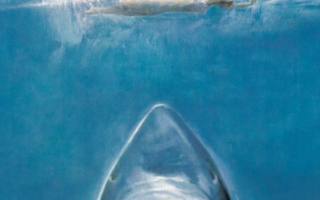It’s late June, 1972. I’m in my first season of Little League at a park in Morton Grove, a suburb of Chicago. I come to the plate with the bases loaded and when the pitch comes in I swing as hard as I can. I hit it a long way but, because we’re all kids, there is no outfield fence. If I want a grand slam I’m going to have to leg it out. I chug around the bases and as I get to third base my coach yells at me, “Jesus, you run like Santo!” I slide home safely and go home the hero. At home it dawns on me what my coach said. He was referencing Ron Santo, the third baseman of the Chicago Cubs. It also dawned on me that, a), when I wasn’t pitching I played third base and, b), I had been given uniform #10, which was Santo’s number. I took that to be fate and for as long as I played baseball – I stopped at age 54 – I wore #10. My son, Phillip, also wore #10. My grandson, Hudson, who just turned 6 months old, has already worn #10. To say we worship at the church of Santo is an understatement. I’ve carried one of his baseball cards in my wallet for decades and even got him to sign it in 1998.
After a brilliant career, Ron Santo went on to endear himself to new generations of Cub fans by providing commentary on the radio. Ronnie was a homer through and through and some of his best remembered calls are when he let emotions overcome him. What many fans didn’t know was that Ron Santo battled diabetes every day, including when he was playing. However, he was so scared that the team would not think him healthy enough to play that he hid the disease from the public until long after his playing days ended. Despite a brilliant career, Santo was never elected to the Baseball Hall of Fame during his years of eligibility. When I lived in Baltimore I would occasionally strike up a conversation with Brooks Robinson, arguably the greatest third baseman ever. He would agree with me that Santo should be in the Hall of Fame and every year, before the voting, I would write a letter to the voting committee and remind them that if the greatest third baseman of all time thinks Ron Santo should be in the Hall of Fame then he damn well better be. Sadly, they ignored me.
In 2003 Santo’s name was placed on the ballot for the Veteran’s Committee. Even though he placed first in votes, he never received the required amount for induction. Santo’s son, Jeff, a filmmaker, decided to honor his father by producing the documentary film “This Old Cub.” It followed his father as he went to the ballpark, greeted fans and, most importantly, continued to battle diabetes, a disease which eventually claimed both of his legs. The film ends with Ron receiving the news that he had not been voted into the Hall of Fame. Proceeds from the sale of the film are donated to the JDRF and to date over a half-million dollars has been raised.
It was five years ago, on December 5, 2011, that the Golden Era Committee gathered to vote on ten players in their final chance for induction. The only player to earn that honor was Ron Santo, who was elected as a member of the class of 2012. Sadly, just a year earlier, on December 3, 2010, Ron Santo passed away at the age of 70. As I posted on Facebook that day, I cried all the way into work that morning.
After Ron’s induction into the Hall of Fame, Jeff Santo revisited his film and created a “special edition,” which includes a final interview with Ron as well as highlights from the ceremony where his number was retired, the dedication of a statue to him outside Wrigley Field (Phillip and I traveled to Chicago for that event) and, of course, his Hall of Fame induction. Since the Cubs FINALLY won the World Series, I thought I would speak with Jeff about the film in the hopes that new Cub fans will seek it out.
Mike Smith: I have to ask…how big is your dad smiling today?
Jeff Santo: He’s definitely smiling man. We miss him. We miss him everyday. But I could feel him during the postseason. You could just feel his presence. Our family took a trip to Chicago for the World Series and we had an awesome time. It really brought back a lot of memories. For my brother and I Wrigley Field was basically our playground. To go back and see dad’s statue and all of the things they had done with Wrigley. They’ve made it a cathedral. And to see all of the people with their number 10’s on…it was amazing. Our dad is in our hearts all of the time. And especially during the World Series. He was there and we felt that strong presence all of the way through it.
MS: Most people know of your dad because of his baseball career but I thought that the bigger message in “This Old Cub” was his on-going battle with diabetes. How important was fighting that battle to him?
JS: It was right up there with winning the World Series or getting into the Hall. My brother and I can always remember him having to take a shot every day before he went to the ballpark. It was just what he did. We didn’t know it was a debilitating disease that may cause him to lose his legs in the future. Or that he had a 25-year life expectancy. We had no clue about that growing up. We just knew that dad took his shot in the morning and then went out to do his business at the ball park. That was it. Of course I learned more after we grew out of our childhood days. Doing the film…to be able to go back in time to see what he did and what this disease could do to a person. To know all of the adversity he went through and how he fought hard to become the ballplayer he was. That was another level that he rose to. As a son watching your father go through that it’s heartbreaking but then you’re inspired by how he handled it and it just makes you a better person. Being his son I can say that. So in the movie we really wanted to show what he overcame without sentimentalizing it. We wanted to show him as a man and what he did accomplish. I wanted to approach the story as a filmmaker and not just be a son making a film about his father. My dad always said…and I remember this from way back…he accepted having diabetes. If he didn’t accept it he couldn’t have gotten through it. It was like, “I know I have this disease now how do I deal with it?” When he first got it in the minors he wanted to ignore it. He didn’t want to take insulin. But then he had to accept it and ask how could he still maintain the level of play as a ballplayer and get through this and work it out. He had to test himself. He had to see how low he could go before he had to take a candy bar. Back then they didn’t have glucometers to check your blood sugar levels. He took that fight on. “I have this. This is who I am. Let’s go.” It was a part of his life and he always knew it was a part of his life.
MS: The “special edition” of “This Old Cub” includes footage from your dad’s Hall of Fame induction. How bittersweet was that honor?
JS: It was very bittersweet. It was sad not being able to see him on the stage. His wife gave an excellent speech but it was sad not being able to see him there. He so wanted to be up there and we all knew that. It was sad. It was tough going out to Cooperstown I have to tell you. Now the World Series was different. We enjoyed it because so many other people were enjoying it. I think the Hall of Fame was sad because so many other people were sad that he wasn’t there. I know he’s glad he’s there but I think it was ridiculous that he couldn’t get in before he died.
MS: They missed out on a hell of a speech.
JS: They missed out on a hell of a moment! For someone that so appreciated his baseball career and his life. It would have been a great moment. But everyone knows he should have been there and that was gratifying to us.
MS: I used to talk with Brooks Robinson when I lived in Baltimore about your dad and he thought your dad should have been in the Hall.
JS: Brooks is in the film. And that’s exactly what he said. And if someone like that says he should be in…come on! I mean you can’t get any better than Brooks Robinson at third base!
“This Old Cub” is now available in the comfort of your home on Video On Demand. You can also order it here. To learn more about Diabetes or to make a donation to the JDRF, click here.


